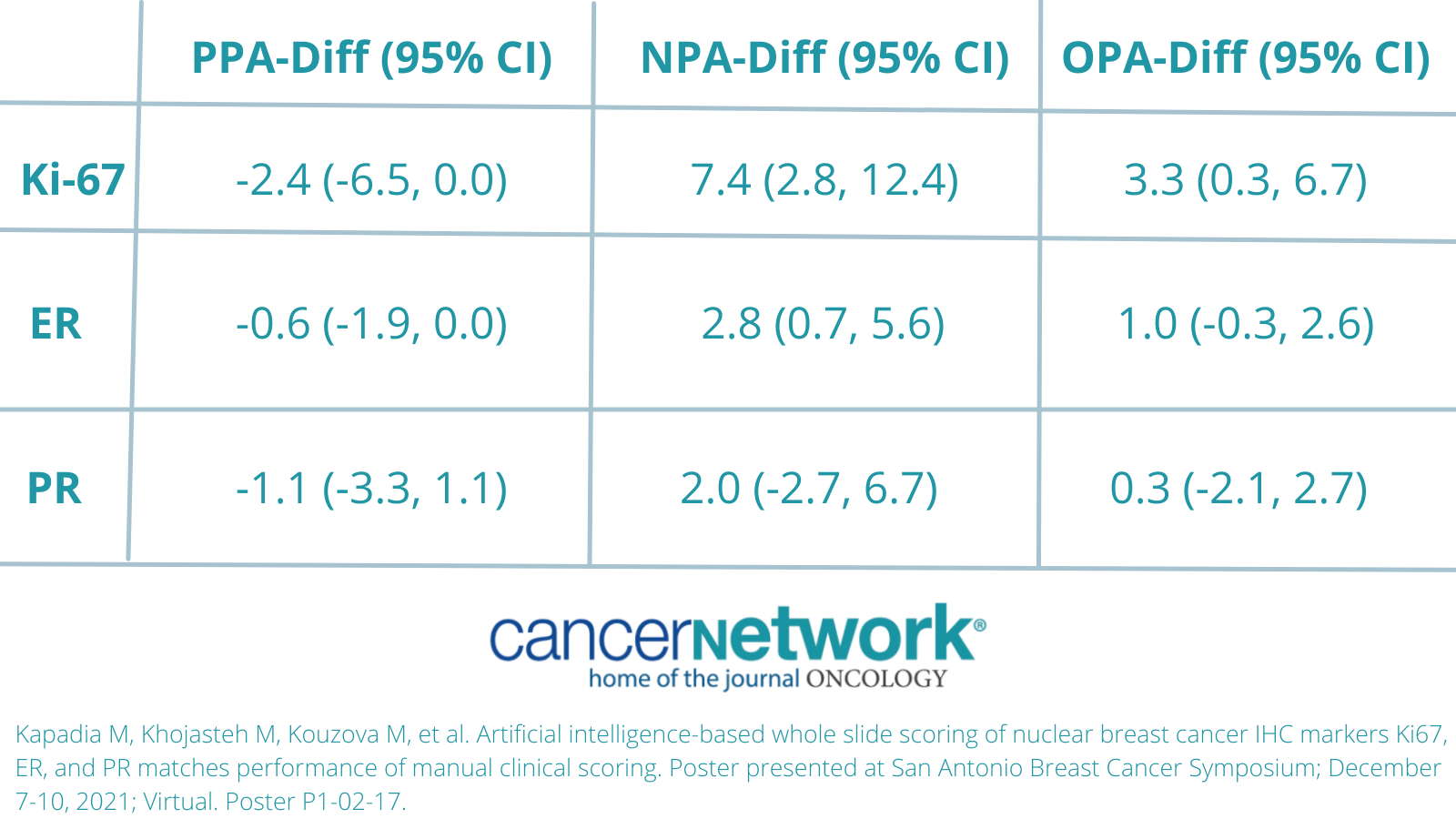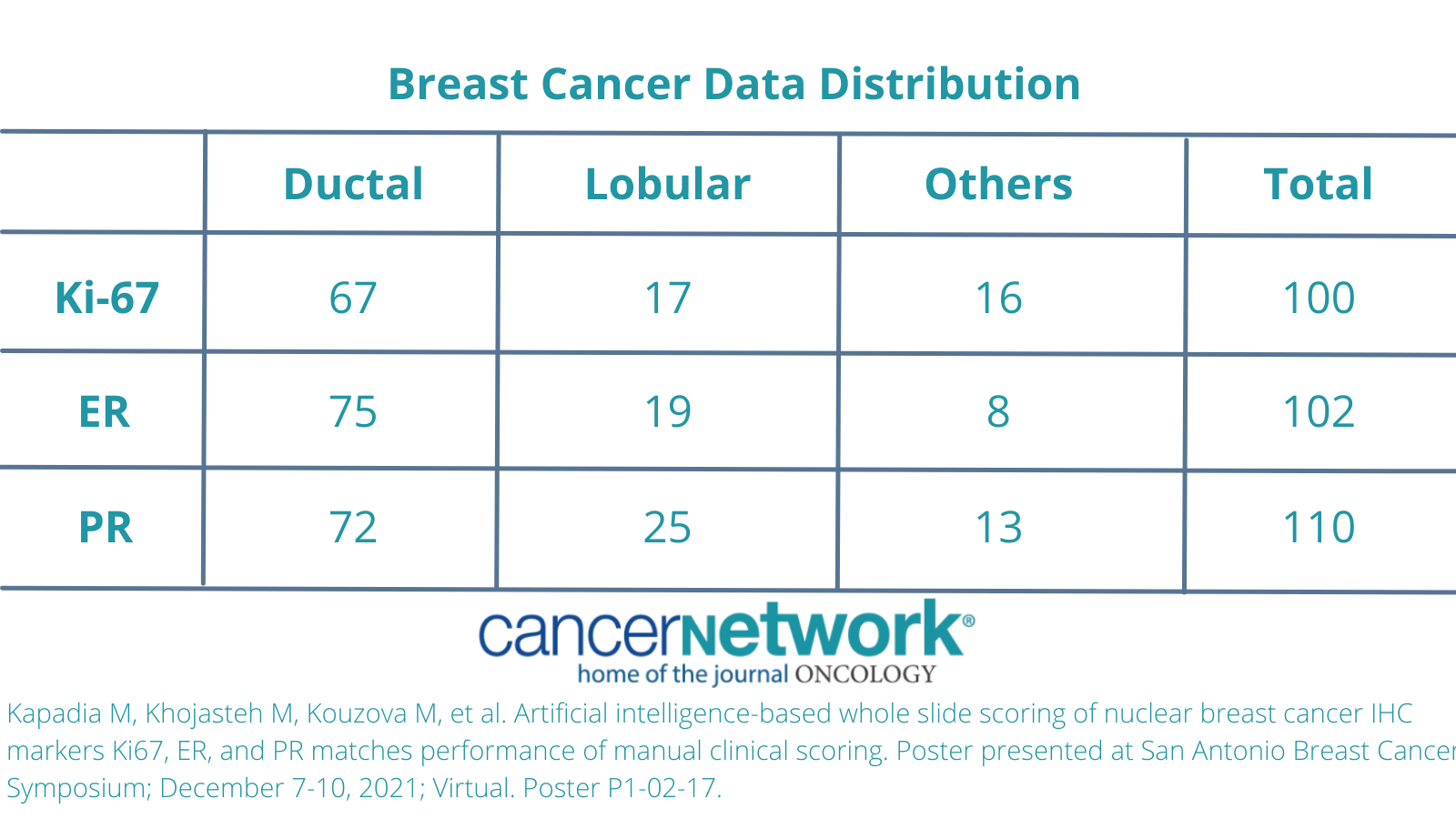Artificial Intelligence–Based Whole Slide Scoring Accurately Identified Status for Several Key Breast Cancer Markers
Investigators were able to identify breast cancer immunohistochemistry markers including Ki-67, estrogen receptor, and progesterone receptor status utilizing deep learning–based artificial intelligence algorithms
Deep learning–based artificial intelligence (AI) algorithms were able to accurately identify tumor cell types and nuclear breast cancer immunohistochemistry (IHC) marker statuses, including Ki-67, estrogen receptor (ER), and progesterone receptor (PR) status, according to a poster presented at the 2021 San Antonio Breast Cancer Symposium.
Feasibility data from the study indicated that whole slide image (WSI) scoring via AI analysis algorithms yielded comparable scoring for Ki-67, ER, and PR in terms of accuracy. Additionally, the method surpassed results garnered through manual scoring in terms of reproducibility.
Results from a study assessing the use of deep learning–based artificial intelligence algorithms to identify Ki-67, estrogen receptor, and progesterone receptor status in breast cancer.

“The differences between image analysis and manual read overall concordance rates when compared to the expert ground-truth were all small. In addition, the AI statistic scoring significantly outperformed manual scoring or inter-reader reproducibility. Thus, our feasibility results showed that pathologists using whole slide imaging analysis–assisted scoring was equivalent to manual scoring in an expert panel ground-truth.”
Three AI-based algorithms were developed to conduct WSI analyses of Ki-67-, ER-, and PR-stained slides. The goal was to determine whether the algorithms could address variabilities and give pathologists in different labs the ability to consistently score with the same accuracy.
During the trial, image analysis results were compared with digital reads for every assay utilizing Roche uPath enterprise software plus the given AI algorithm regarding ground truth reference diagnosis; both were performed via 3 reader pathologists. Moreover, positive (PPA), negative (NPA), and overall percent agreements (OPA) were determined for image analysis compared with ground truth, as well as digital reads compared with ground truth.
The study’s co-primary end points were between-method differences of PPA and NPA across the 3 reader pathologists.
Notably, all IHC markers are included as separate algorithms within Roche’s uPath enterprise software. The whole slides are tiled into smaller field of views (FOV) that are subsequently entered into the deep learning model, which then processes every FOV to produce multi-channel probability images. Each channel represents a class of cell type and the probability of being grouped to a class is represented by pixel values. The probability image is further processed in order to determine the locations of cells and to note class labels.
In total, 312 cases of breast cancer were gathered to comprise the benchmark and clinical feasibility validation set. Cases were selected in order to represent factors beyond subtypes, including score, specimen, and grade.
Breast cancer data distribution

“Leveraging the standardization and reproducibility of Roche's end-to-end solution from assay staining, image scanning, and uPath Enterprise pathology platform, these algorithms suggest that the untapped potential of elevating lab-to-lab and reader-to-reader reproducibility of clinical scoring at an expert-level is achievable,” the investigators concluded.
Reference
Kapadia M, Khojasteh M, Kouzova M, et al. Artificial intelligence-based whole slide scoring of nuclear breast cancer IHC markers Ki67, ER, and PR matches performance of manual clinical scoring. Poster presented at San Antonio Breast Cancer Symposium; December 7-10, 2021; Virtual. Poster P1-02-17.
Newsletter
Stay up to date on recent advances in the multidisciplinary approach to cancer.